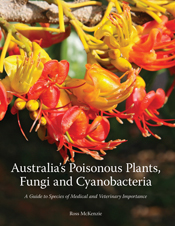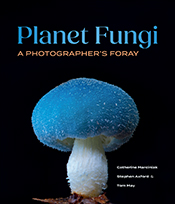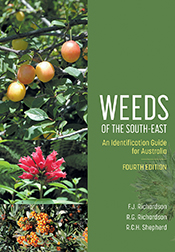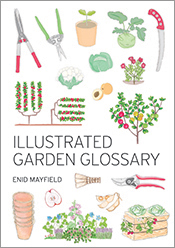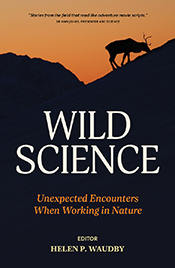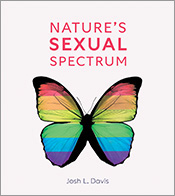Australia's Poisonous Plants, Fungi and Cyanobacteria
A Guide to Species of Medical and Veterinary Importance
By: Ross McKenzieA comprehensive guide to the major poisonous plants in Australia affecting both livestock and humans.
Australia's Poisonous Plants, Fungi and Cyanobacteria is the first full-colour, comprehensive guide to the major natural threats to health in Australia affecting domestic and native animals and humans. The overriding aim of the book is to prevent poisoning, as there are few effective treatments available, particularly in domestic animals. + Full description
The species have been chosen because of their capacity to threaten life or damage important organs, their relative abundance or wide distribution in native and naturalised Australian flora, or because of their extensive cultivation as crops, pastures or in gardens. These include flowering plants, ferns and cone-bearing plants, macrofungi, ergot fungi and cyanobacteria.
The plant species are grouped by life form such as herbs, grasses and sedges, shrubs, trees, and for flowering plants by flower type and colour for ease of identification. Species described have colour photographs, distribution maps and notes on confusing species, habitats, toxins, animals affected, conditions of poisoning, clinical signs and symptoms, post mortem changes, therapy, prevention and control. Symbols are used for quick reference to poisoning duration and available ways of managing poisoning. As further aids to understanding, poisoning hot-spots are highlighted and the book lists plants under the headings of animals affected and organs affected. A Digest gives brief details for all poisonous species in Australia.
This book is written in a straightforward style making it accessible to a wide audience including farmers, veterinarians, agricultural advisors, gardeners, horticulturists, botanists and park rangers, medical practitioners and paramedics, teachers, parents and pet owners. First published in 2012 as a hardback and made available in eBook format in 2020.
- Short descriptionNews
Published as a Hardback in June 2012, this title is no longer available in a print edition. This title was released for the first time in eBook editions in May 2020.
Listen to Ross chat with Richard Fidler on ABC Conservations on the role of plants in animal deaths and disease.
Watch Ross on Gardening Australia in a segment called Don’t Panic!
Reviews
"This book will become the poisonous plant bible for farmers, veterinarians, agricultural advisors and anyone else with deep interest in toxic plants, fungi and cyanobacteria. It is the distillation of the many years of experience of its author Ross McKenzie and is written in a clear straightforward manner that makes its contents readily accessible. Ross is congratulated for having the patience and perseverance to produce this amazing body of work."
RG Richardson, Plant Protection Quarterly, pp. 138, Vol 27 (4), 2012
"I recommend this physically, philosophically and scientifically beautiful book to anyone who has an interest in the world around them."
Michelle Cotton, Australian Veterinary Journal, pp. 512, Vol 90 (12), December 2012
"Everyone involved with livestock, or who work or live in areas where there are potentially dangerous plants, fungi, and cyanobacteria present, should have a copy of this book readily available. It is well illustrated and clearly written with a minimum of scientific terms used in the descriptions... This book certainly achieves the aims of the author. It will certainly be sitting on my coffee table."
Betsy Jackes, Australasian Systematic Botany Society Newsletter, pp. 9-11, September 2012
"It is an essential reference for pet and livestock owners, and those working in school or community gardens."
Jerry Coleby-Williams, Gardening Australia, pp. 80, November 2012
"Australia’s Poisonous Plants, Fungi and Cyanobacteria (APPFC) is a rare example of a magnificently presented book replete with valuable information, authoritative, comprehensive, and, amazingly, just so readable. It is the literary equivalent of the signature dish from a 4 hat chef. The reader will be struck by the number and clarity of the photographs of plants and fungi associated with significant possibility of poisoning.
I believe that Australia’s Poisonous Plants, Fungi and Cyanobacteria should occupy an important and prominent place on a bookshelf readily accessible to every veterinarian in clinical practice as well as those supporting clinicians or with other interests in animal health."
Control & Therapy Series, No. 268, pp. 4-5, September 2012
"Although the book will no doubt be an invaluable reference source to specialists including farmers, veterinarians, horticulturists, botanists, medical practitioners and paramedics, its straightforward and readable style and excellent presentation with many colour photographs should also make it of interest to an even wider audience."
Acacia Study Group Newsletter, No. 117, pp. 8
Details
ePDF | May 2020ISBN: 9781486313877
Publisher: CSIRO Publishing
Available from eRetailers
ePUB | May 2020
ISBN: 9781486313884
Publisher: CSIRO Publishing
Available from eRetailers
Features
- High-quality coloured photographs show plants as seen in the field and their key features
- Distribution map for each species
- Covers all Australia
- Scientifically-accurate, up-to-date information on species, toxins, effects and management
- Covers species affecting both humans and domestic animals
- Inclusion of macrofungi, ergot fungi and cyanobacteria
Contents
About the authorPreface: why this book?
Acknowledgements
Warnings
Using this book
1 Understanding plants and plant poisoning
2 How to confirm tentative identifications
3 Common poisoning profiles
Part 1 Poisonous cyanobacteria (blue-green algae)
4 Poisonous cyanobacteria (blue-green algae)
Part 2 Poisonous fungi
5 Poisonous fungi
Part 3 Poisonous vascular plants
6 Poisonous ferns
7 Poisonous cycads
8 Poisonous grasses, sedges and mat-rushes
9 Poisonous grass-trees
10 Poisonous grass-like herbs (iris and lily families)
11 Poisonous forbs (non-grass-like herbs)
12 Poisonous vines (climbing plants and creepers)
13 Poisonous shrubs
14 Poisonous trees
15 Digest of poisonous cyanobacteria, algae, slime moulds, macrofungi and plants in Australia
APPENDIX 1: Aids to identifying flowering plants
APPENDIX 2: The top killers
APPENDIX 3: Poisoning hot-spots
APPENDIX 4: Animals and the major species that poison them
APPENDIX 5: Body systems affected by the major poisonous species
APPENDIX 6: Australian states with major poisonous species
Glossary
References and further reading
Index
View the full table of contents.
Authors
Ross McKenzie is a retired veterinary pathologist, toxicologist and research scientist from the Queensland Department of Primary Industries where he diagnosed and researched diseases of livestock for 36 years (1973-2009). Known as ‘the whistling pathologist’, he carried his fair share of the veterinary workload of the central diagnostic laboratory at Yeerongpilly in Brisbane, for instance personally handling 10,000 case accessions from livestock disease investigations throughout Queensland during 1990-2002. He is also a retired conjoint senior lecturer from the University of Queensland where he taught toxicology to veterinary students for 14 years (1994-2008). His students called him ‘Toxic Ross’ and his 2007 class gave him a ‘Joie de Vivre’ award for making the study of toxicology enjoyable. They had thought it would be deadly!He earned a Bachelor of Veterinary Science degree (with Honours) from the University of Queensland at the start of his career, then the degrees of Master of Veterinary Science and Doctor of Veterinary Science some 20 years later, recognising his research achievements. He won the Australian Veterinary Association Excellence in Teaching Award for 2002, the Queensland Natural History Award for 2004 and in 2009 was honoured with the Public Service Medal within the Order of Australia for his research in veterinary pathology and toxicology. He has authored over 100 scientific publications reporting original contributions to knowledge and has contributed to several international veterinary text and reference books. He is now an Honorary Research Associate of Queensland Herbarium and of Biosecurity Queensland. He is also a (very) amateur botanist and photographer. His family roots are in the earth of the Maranoa district of rural Queensland. He lives in Brisbane with his wife Glenyth, and a garden containing many poisonous plants.

